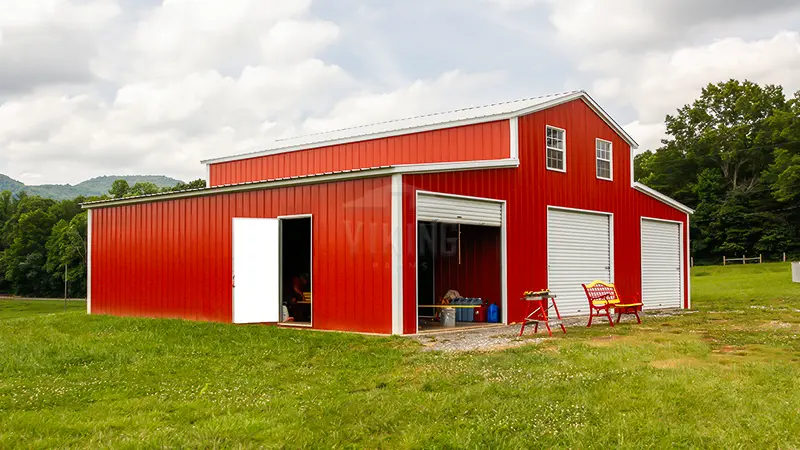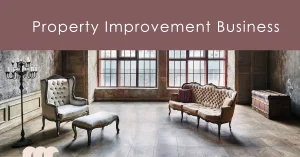Farmers and ranchers are getting over with traditional barns for their farms. This is mainly due to inefficient wooden barns and demanding high maintenance in the long run. In addition, they are prone to rot and structural damage due to termite infestation. The Prefab farm buildings have entered the agricultural sector due to their hold against extreme weather, low upkeep, and long-lasting durability.
Advantages Of Using Metal Structures For Agricultural Purposes
Metal buildings are stronger and more durable than wood. The structural steel is 25 times stronger than wood. Unlike wood, metal frames and panels are non-combustible and resistant to rot, decay, and pests. Engineer-certified farm steel buildings can withstand heavy snow loads and high-speed winds (some metal builders offer certification for up to level 3 tornadoes).
Metal, being an inorganic material, is resistant to pest infestation. Rodents can’t chew through the panels and enter inside, creating nests in hay bales or introducing pathogens to the steel livestock shelters. Moreover, 100% galvanized steel is coated with molten zinc, which creates a protective layer around it, making it resistant to rust and corrosion.
Steel frames are lightweight, making them easy to ship and maneuver at the construction site. This reduces costs in areas such as foundations and facades. Prefab agricultural buildings can also be clear-span designs free from internal obstructing columns and walls. The open floor plan allows farmers to shelter livestock, have a milking parlor, store hay and feed under one roof.
Steel Buildings Can Be Used As:
- Livestock shelter
- Feed and hay bale storage
- Storing crops, seeds, and grain bags
- Farmhouse
- Parking farm vehicles
- Storing farm tools and equipment
Cost Effectiveness And Durability Of Metal Farm Buildings
A turnkey steel building costs between $25 to $45 per square foot. This includes raw materials, shipping, foundation, and installation. Remember that most metal building dealers won’t offer site prep or foundation included in their quote, so you must ensure the base is ready before the construction team arrives.
The initial cost of installing a metal structure may seem higher than that of a wooden barn. Still, they are virtually maintenance-free, costing less overall than any traditional farm building. If you are running tight on budget, opt for metal farm buildings for sale. You can find them on metal builders’ websites or social media handles.
Prefab metal structures are mass-produced in factories. Hence, assembling them on-site requires less labor and time. Farmers can start early and enjoy the benefits of prefab agricultural buildings for livestock shelter, hay bale storage, or parking farm vehicles.
Maintenance Considerations For Long-Term Use
Metal barns outshine any traditional structures when it comes to upkeep. Not only that, but farmers also save on regular termite inspection & control, annual re-painting, and re-coating of the building. Cleaning a farm steel structure is also easy. Use warm water with mild soap and a regular garden hose or pressure washer.
Avoid using abrasive cleaners and a pressure washer at a high setting, as they may chip off paint or the protective layer. With little maintenance, your metal agricultural building can last long and retain its structural integrity over time.
Energy-Efficient And Sustainability Features Of Metal Buildings
Insulated panels inside a metal farm barn help regulate indoor temperatures. They reduce heat transfer and minimize the risk of condensation. The insulated roof of prefab farm buildings can save up to 25% heat loss. Overall, it reduces the cost of cooling in summer and increases energy efficiency.
Farmers can opt for roof-only metal barns with reflective coatings that redirect harsh UV rays. Thus, the indoors are more incredible than the surrounding area during the day. For warmth, add dark color to the metal roof panels. They will retain heat during winter. Farmers can choose roof colors based on their local climate zone.
Steel buildings also offer long-term savings. Farmers can strategically place windows and vent systems [ridge vent/ stall windows/ ridge vent] in their metal barn designs to increase natural lighting and fresh airflow. There is less need for artificial lights during the daytime, and mechanical exhausts will save significantly over time.
Customization Options For Specific Farming Needs
1. For Livestock Barns
Farmers can opt for Carolina-style barns, which have a raised center and broader aisle for feeding animals and the convenience of farm workers. The sides can be divided into individual stalls or cattle seating areas.
Ridge vents between the roof slopes push warm air out, and windows and doors bring cooler, fresh air inside. They also bring natural light. You can insulate a livestock metal barn for comfort during hot summers and extreme winters.
Placing animals head-to-head will make it easy to manage manure and composting. You can add an extra lean-to on the side for loading the shed or storing hay stacks to create bedding.
2. For Farm Storage
Farmers can choose between an open metal barn with a roof only to store hay bales. This barn will be easy to transport and use for livestock purposes. For grain and other harvests that require more protection and controlled temperature, a farmer can opt for a commercial clear-span metal building.
Divide the interior into sections to keep crops, seeding, grain bags, etc. Farmers can also add color and design elements like external siding, signage, etc., to create a welcoming environment and boost aesthetics.
3. For Parking Farm Vehicles
Fully enclosed metal barns, such as Serena barns, are suitable for parking farm vehicles such as seeders, harvesters, combines, and tractors. Farmers can also keep large-size crop dusters inside a clear-span metal barn.
The sides can park smaller vehicles like ATVs or create a storage shed for farm tools, equipment, and machinery.
Building The Future Of Farming
Farm steel buildings are the bold solution for increasing agricultural efficiency. They are durable, resistant to elements, and easy to maintain. Metal barns have become a staple structure providing long-lasting protection to farmers’ valuable crops and livestock. Further, they can be modified, expanded, and customized to the farm’s needs and purpose. Investing in metal farm structures can maximize operational efficiency.




